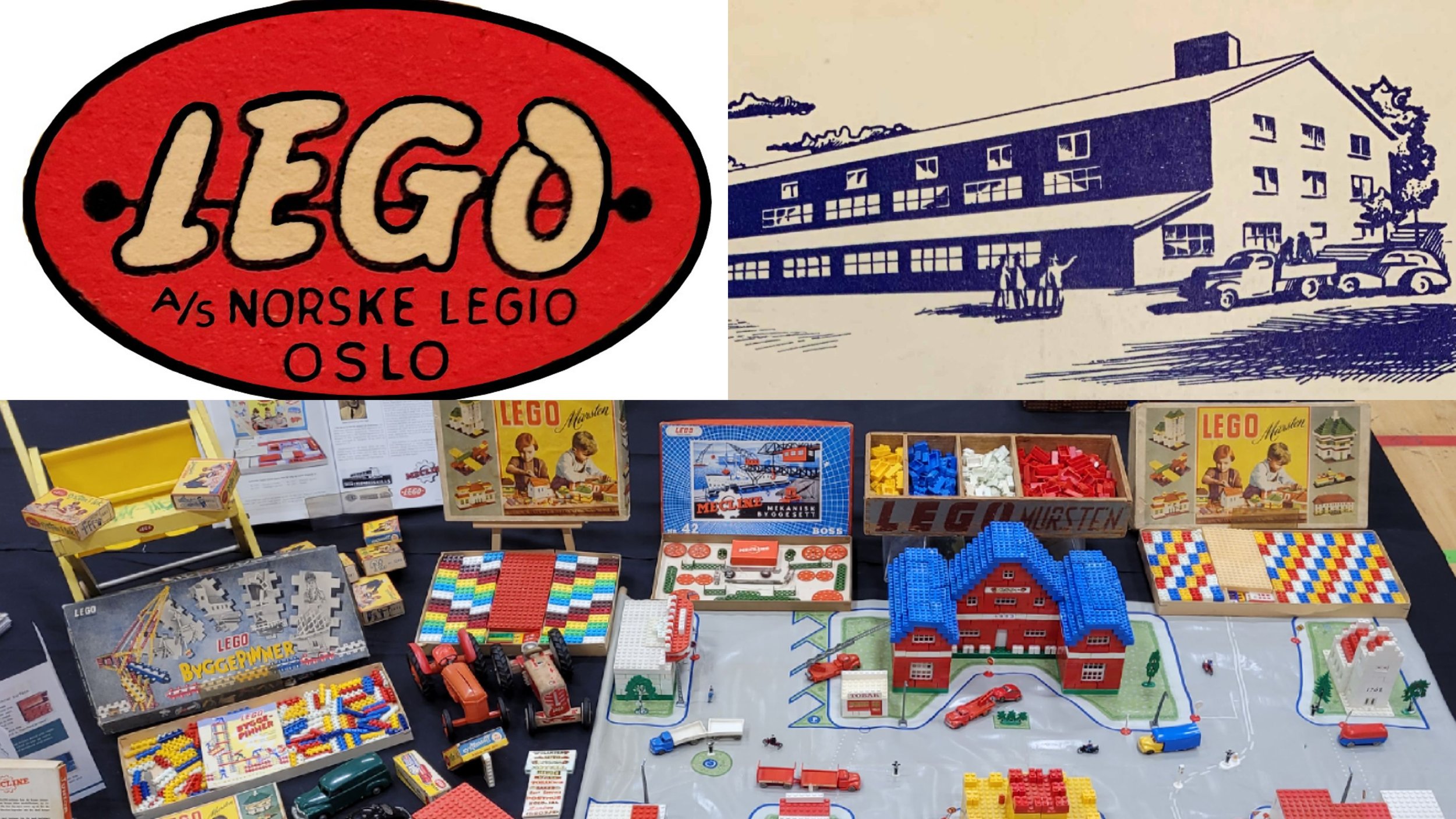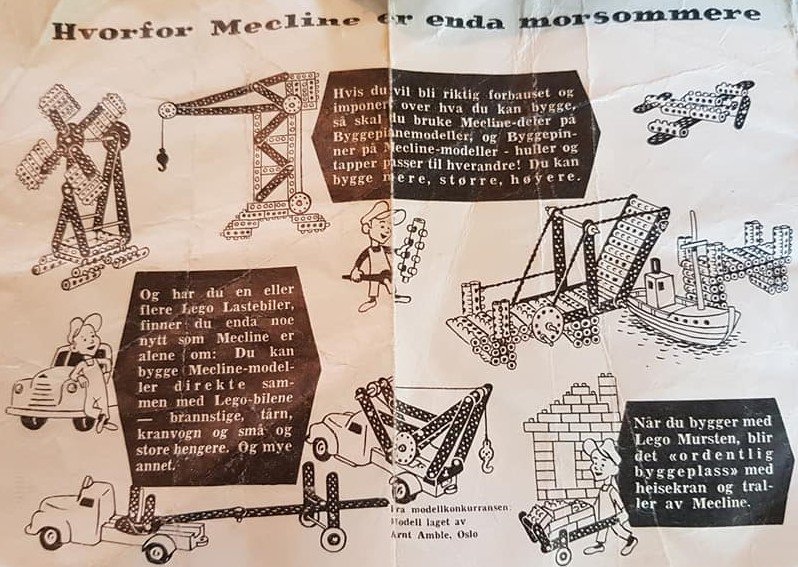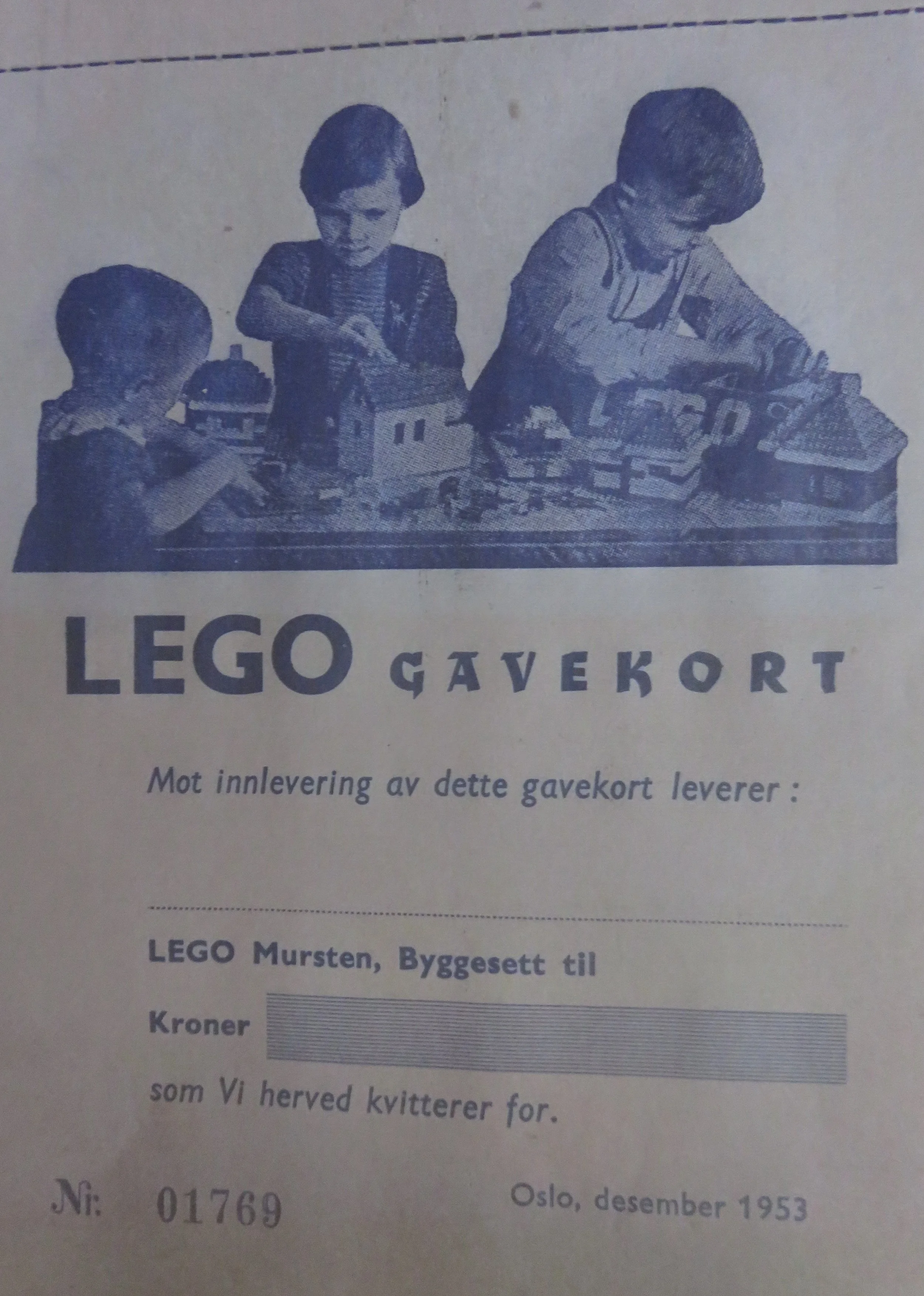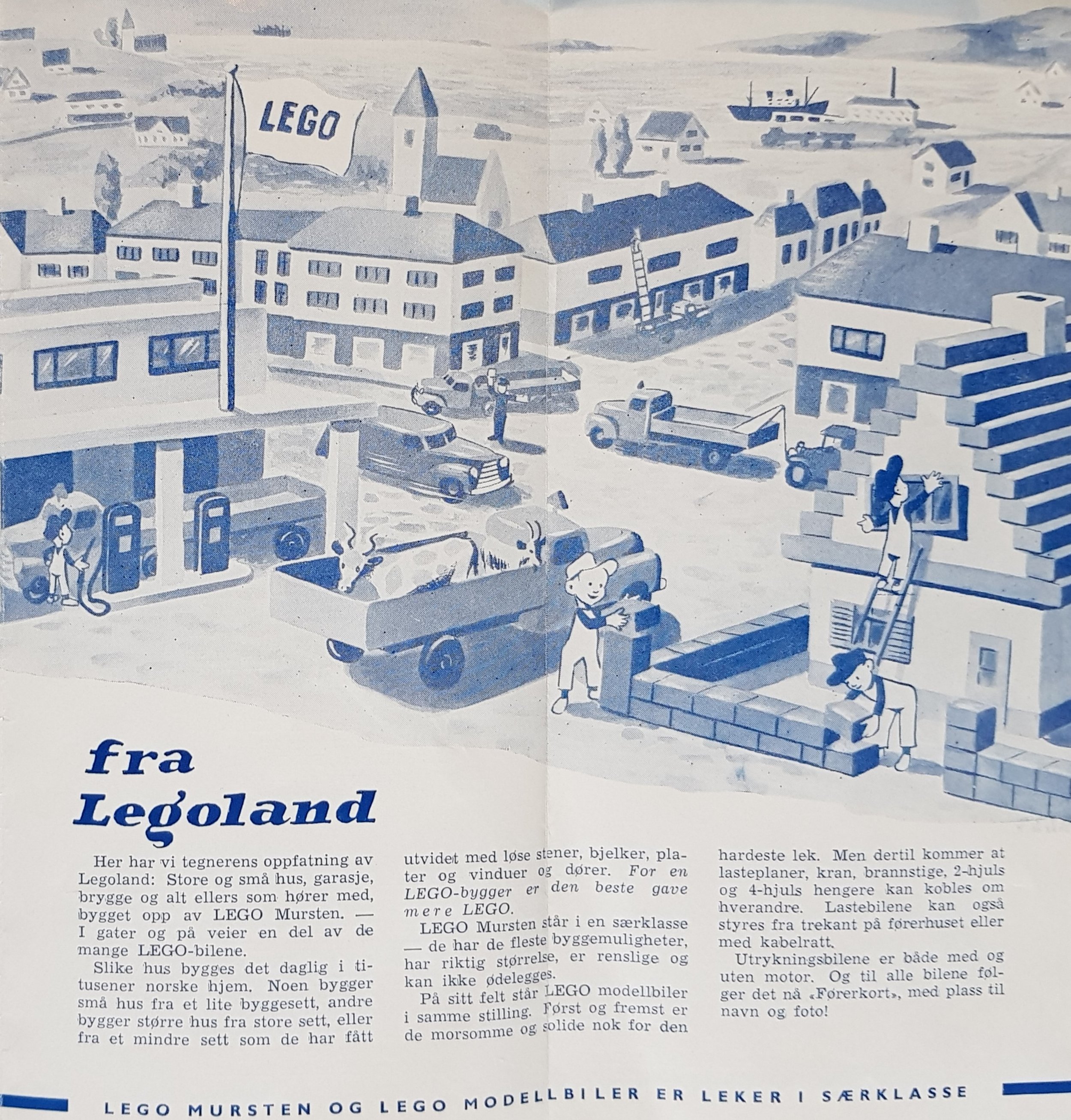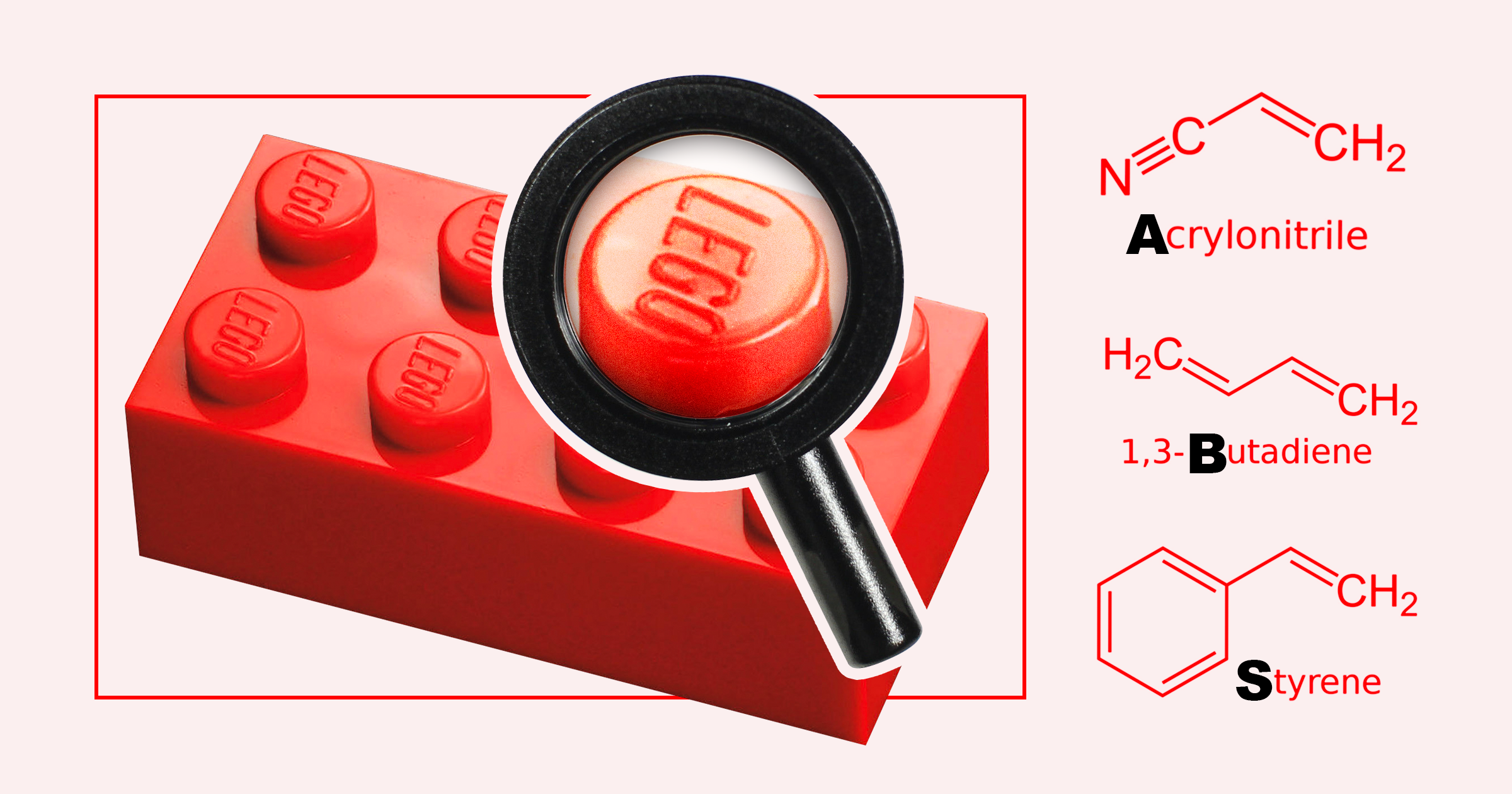The Untold Early History of LEGO in Norway
/Today’s guest article comes from Fabian Lindblad, a 23-year-old collector from Norway who focuses on LEGO history including sets, prototypes, test parts and paperwork from 1970 and earlier.
LEGO in Norway
A few years ago, the fan community celebrated 60 years of LEGO in Norway, so it may come as a surprise that Norway actually celebrated the 70th anniversary of LEGO that year. How did Norway become the first country outside Denmark to produce and sell LEGO, and why don’t we hear more about it? Today, we will look into the history and items of the short-lived Norwegian LEGO factory.
The Norwegian LEGO logo top left, the Norwegian factory top right and a selection of Norwegian-made LEGO on the bottom.
As a brief aside, collecting items with a story has always been important for me, and it is probably why I have ended up collecting and researching these specific parts of LEGO history. A few years ago, I contacted Arild Anderson in Norway who shared my interest and love for LEGO and history. He had already deep-dived into the history of LEGO in Norway which I knew little of at the time. It is thanks to him we have uncovered so much of the information we have today, and writing this whole article would not have been possible without him. Thank you, Arild!
A Plastic Partnership
When LEGO was looking to expand beyond the borders of Denmark, their choice landed on the neighboring country of Norway. Ole Kirk Christiansen went to work in Norway where he befriended Svein Strømberg who was a carpenter apprentice at the time. Later, Svein became good friends with Ole’s son Godtfred who was around his same age when the LEGO adventure started. Svein Strømberg started plastic production in Norway a year before LEGO did in 1947, so he actually had a bit more experience than LEGO at the time. In 1951, they started talking about making LEGO toys in Norway, and in 1953, everything was agreed upon for the production to start.
Strømbergs were a big company in the plastic industry in Norway making not only toys but also lots of household articles. Here you can see an advert with some of the products they made at the time, ca. 1954.
The agreement was a licensing deal. Strømbergs, the name of Svein’s plastic product company, started out making a series of “LEGO Mursten” sets and LEGO Chevrolet trucks. Strømbergs also helped LEGO test the interest of certain toys for the Norwegian market—one of those toys being the “Byggepinner” or “building sticks” in English.
The Byggepinner sets came in two sizes, this is the biggest 30/1 set. The colours were red, yellow, blue and white with some colour variations like dark blue instead of blue. Originally the sets had inlays that the Byggepinner were neatly placed into.
As for the bricks at the time, this was not an idea by LEGO but rather copied from other toy manufacturers. The sticks were made of plastic and could make for some interesting builds—but they were not directly compatible with the LEGO bricks. The Byggepinner never made it to Denmark which is most likely because they never became hugely popular in Norway.
One interesting idea they had with the Byggepinner was to try and expand on the playability by making them interact with yet another building system they made called “Mecline.” Mecline was similar to Tekno and Meccano, which some of you may be familiar with, which were toys made of metal and assembled using screws and bolts.
The Mecline sets came in multiple sizes, this is nr. 42, ranging from 40-46, 46 being the biggest. Notice LEGO is used as the brand name/trademark on the top left and not used as part of the product name like with the Byggepinner.
Unlike the Byggepinner, Mecline was not directly a LEGO product but was labeled as part of the LEGO brand in Norway. Strømbergs pushed the LEGO name out as much as possible to make it popular, leading to some unrelated toys having the LEGO brand name on the boxes.
Not stopping at the cobranding of Mecline and Byggepinner, they found out that Mecline could also very well be attached to LEGO Chevrolet trucks. This idea actually came from a child who had attached Mecline to their LEGO Chevrolet and sent a picture to Strømbergs! It ended up being heavily marketed to help the sales of both Mecline and the Chevrolets.
“Why Mecline is even more fun.” Here we can see how they wanted kids to combine and play with the different toys and building systems together, from an idea leaflet included in a Mecline set.
Another LEGO toy only made for the Norwegian market was the Skutegalleri—a set with some small plastic model ships. This was meant to be an actual LEGO product just like the Byggepinner but never made it back to Denmark either.
LEGO Skutegalleri (Ship Gallery) seems to have not been the most popular toy. At this moment only two sets have ever been found, one of them being in the LEGO archives. © Niels Åge Skovbo/Fokus Foto
Meeting Demands
The backside of one of the very first LEGO sets made in Norway. This was the smallest of the bunch, 700/a, only including twelve 2x4 bricks and 2x2 bricks. In the bottom right you can see the name before the change.
Strømbergs was made up of multiple sub-divisions dealing with their own part of the plastic production.
After the change and with the introduction of a new LEGO logo in Denmark and Norway, this became the main logo for A/S Norske LEGIO and LEGO products.
They called the toy division “A/S Norske LEGO” (“A/S Norwegian LEGO). Not long after they had started in 1953, they received a complaint from “A/S LEGO.” Apparently, another company had already taken the company name “LEGO” in Norway! There was nothing they could do at the time, so they had to change their corporate name to “A/S Norske LEGIO”—this name was in use all the way to the end of the partnership. Luckily the product name “LEGO” was okay to use, so the bricks and toys could be marked and sold as LEGO.
Here is the gift card the retailers would give to their customers so they could come and pick up a LEGO set when it was back in stock again.
When Norway first started production, they ran into another huge problem. They were not prepared for the popularity the LEGO bricks would garner at its release. Consequentially around Christmastime, they were very behind on producing playsets, both parts and boxes.
To combat the production problems, they issued gift cards to the retailers that parents could buy. The gift cards could be exchanged for LEGO sets and parts when they were back in stock. Customers could also bring empty boxes back to the retailers for a small discount, and the retailers would then be compensated for sending the boxes back to the factory. Quick thinking!
During this period, Denmark helped Norway with some parts and boxes to help ease the enormous interest. LEGO bricks might have been more popular in Norway than in Denmark at the time of their first release!
This is believed to be one of the boxes sent from Denmark. It is a bit simpler in design, but that could match the hurry they had with making enough boxes to meet the demand. Photo by Ørjan Dalseth, owned by Arild Anderson.
One of the reasons why Norway had its own factory (and not Denmark just scaling up their production) was because Norway had very strict currency restrictions after WW2 and through the 50s. This made the import of luxury articles such as toys difficult but was meant as a way to help the Norwegian economy and create more jobs. For LEGO, setting up their own production factory in Norway made things easier.
The LEGO System
In 1955, the “System I Lek” (System in Play) was released in Norway and Denmark. This was a huge success, but once again, Strømbergs had not scaled up their production enough to meet the demand and suffered shortages. Around this time, LEGO had just started some set sales in Sweden as well which Norway helped produce. The Norwegian facotry eventually even helped supply the Dutch market with sets and parts.
The introduction leaflet for System I Lek included in some of the bigger sets and hanging in stores.
Possibly one of the most famous Norwegian LEGO toys is the “Opel Kapitän” car designed in the traditional LEGO System scale. It was released in 1957 as part of the “System I Lek” and was designed by Strømbergs. They were shipped out to retailers, but issues from the consumers started being reported soon after. The cars were just not durable enough and could not withstand the hard play of most children, making the roof of the cars break and the wheels get pushed into the car when too much pressure was applied.
Strømbergs and LEGO were not happy with the quality of their product either and decided to pull them off the market shortly after release. The remaining cars were given to employees, friends and families so they would not go to waste. Today, the Opel Kapitän is probably the most sought-after LEGO System car—and copies are hard to find.
An Opel Kapitän in a wonderful cherry red colour. These came in a variety of colours due to them being hand-painted.
Some of the exclusive colors and items mentioned above.
Part of the agreement for the licensed production was that Strømbergs would not be allowed to change the plastic moulds they had available in any way. However, they were free to use whatever colours, packaging and decals they wanted, and even expand the line of toys with some of their own which they did for the Opel Kapitän.
In some instances, they went all out wanting to make the Norwegian LEGO completely different from the Danish. This included special coloured parts like brown bricks and pink windows, single-coloured VW buses, a tow and ladder attachment for the Chevrolet trucks and much much more! For collectors today, these parts and items are highly sought after because of how unique and rare they are compared to the Danish variants.
LEGOLAND Norway?
Moving on to another mystery, for the first time last year, we found a familiar word in a small Norwegian leaflet that said “LEGOLAND.” However, the first LEGOLAND opened in 1968 in Billund but this leaflet dates to 1954.
It turns out the name LEGOLAND may have first been used in Norway and was meant to be the predecessor of “System I Lek” introduced in 1955. LEGOLAND would have been in the scale of the bigger LEGO Chevrolets (Ca. 1:43 scale and not 1:87 like the system). The name has mysteriously not showed up after that, maybe because LEGO in Denmark had some plans for it...
Parting Ways
Sadly the production of LEGO in Norway was short-lived. In 1959, all production moved back to Denmark. Svein Strømberg continued working as the primary sales agent of LEGO in Norway. Fun fact: Svein went on a business trip to the plastic manufacturer Borg Warner in the early 60s and brought home a bag of Cycolac (ABS) plastic which he gave to Godtfred. He found the new type of plastic much more suitable for the bricks than the Cellulose Acetate they were using at the time.
Svein was not the only one in the family who continued working for LEGO—two of his sons did as well. One helped establish LEGO in Wrexham in the UK, and the other worked for LEGO in Billund, Denmark as a consultant.
The founding family of LEGO and the Strømberg family continued being close, exchanging letters and going to birthdays and vacations together many years after, all the way to the 1990s. Godtfred passed away in 1995 and Svein the year before. Relations have since cooled, so it could be that the younger generations who took over did not have as much in common. It is still unknown why exactly the contact stopped so abruptly. Talking to the Strømberg family today, they also do not know why.
At Svein Strømberg’s funeral, Godtfred gave extra thanks to Svein for finding Cycolac (ABS) plastic as it most likely saved the LEGO company. At the time, the German market was complaining about the quality of the older bricks and plastic used, and they were one of the biggest, if not the biggest, market for LEGO at the time.
The CA plastic easily warped, as can be seen here.
Today, there is little recognition from LEGO about their early production in Norway. Last year the company celebrated 60 years of LEGO in Norway—a number relating to when LEGO themselves established the first sales office there in 1962 and ignoring the early manufacturing partnership. During the festivities, the local LEGO community was hoping for a mention from LEGO about the early years of production, but there was sadly nothing that came of it.
To address this oversight, my good friend Arild Anderson and I took it upon ourselves to properly celebrate the 60-year anniversary of LEGO in Norway by showcasing the early history that we knew at an exhibition in Oslo. We are continuing the exhibition this year, celebrating the proper 70th anniversary (1953-2023) of LEGO in Norway. (Keep an eye out for the display at the LEGO fan-organized KlossExpo in Oslo, Norway, this weekend November 11th-12th).
Here is a part of our display from last year—this year we are going all out!
The exhibit will showcase the world's largest collection of Norwegian-made LEGO in combination with the story of how it all began. The family of Svein Strømberg will also be attending to celebrate with us.
History and Heritage
Looking back at the few years of production in Norway, there is no doubt that the Strømbergs had a big impact on LEGO—from testing out new toys, products and colors to finding a new plastic material and saving the future of the LEGO brick. The little town of Billund, Denmark has done exceptionally well by itself, but it would not have been as successful as it is today without expanding past their borders and receiving help from great minds all around the world, including Norway.
If you ever come across one of those old warped bricks, you know the story of how they came to be, how Norway became the first LEGO producer outside Denmark, and how a Norwegian saved the company. Now that is a heritage worth celebrating.
Best of BrickNerd - Article originally published November 10th, 2023.
Had you heard about the history of LEGO in Norway before? Let us know in the comments!
Do you want to help BrickNerd continue publishing articles like this one? Become a top patron like Charlie Stephens, Marc & Liz Puleo, Paige Mueller, Rob Klingberg from Brickstuff, John & Joshua Hanlon from Beyond the Brick, Megan Lum, Andy Price, Lukas Kurth from StoneWars, Wayne Tyler, Monica Innis, Dan Church, and Roxanne Baxter to show your support, get early access, exclusive swag and more.

